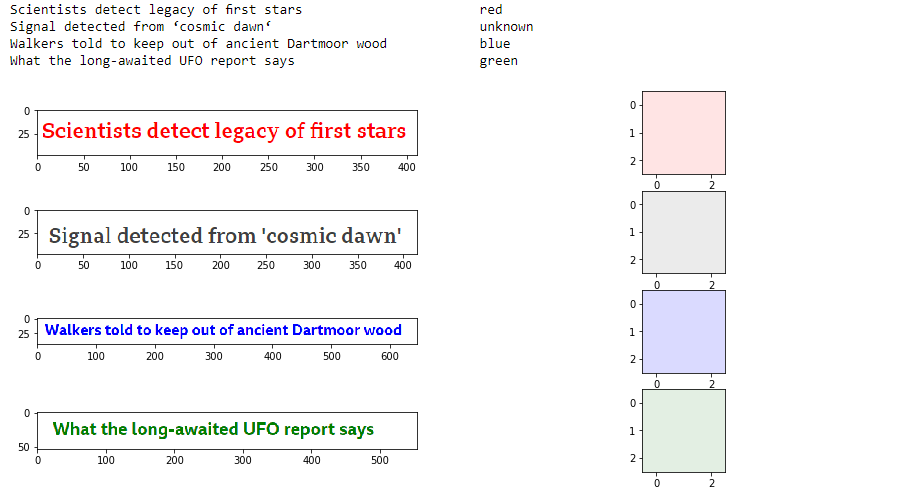Answer the question
In order to leave comments, you need to log in
Tesseract text color recognition?
I am writing a program that should sort text in real time by color
like this:
it is shown the text, if it is red, it writes it to a variable, if it is different (only green and red should beat there), then the program stupidly forgets about it ... I
use tesseract opencv
PS in this code a bunch of codes from the Internet)
in short, here is my code:
import pyautogui
import cv2
import mss
import numpy
import time
import pytesseract
def screen_r():
mon = {"top": 500, "left": 550, "width": 500, "height": 300 }
title = "lol"
fps = 0
sct = mss.mss()
last_time = time.time()
while True:
img = numpy.asarray(sct.grab(mon))
fps += 1
balance = pytesseract.image_to_string(img, config='outputbase digits')
print(balance)
cv2.imshow(title, img)
if cv2.waitKey(25) & 0xff == ord("q"):
cv2.destroyAllWindows()
break
return fps
print("mss:", screen_r())Answer the question
In order to leave comments, you need to log in
Look at the predominant color in the RGB channel.
Here is an example on the knee:
import os
import matplotlib.pyplot as plt
from matplotlib.pyplot import imshow
import cv2
import numpy
import pytesseract
os.environ['TESSDATA_PREFIX'] = r'C:/Program Files (x86)/Tesseract-OCR/tessdata'
TESS_PATH = r"C:/Program Files (x86)/Tesseract-OCR/tesseract.exe"
pytesseract.pytesseract.tesseract_cmd = TESS_PATH
IMAGE1 = '.\img\Screenshot_9.png'
IMAGE2 = '.\img\Screenshot_10.png'
IMAGE3 = '.\img\Screenshot_11.png'
IMAGE4 = '.\img\Screenshot_12.png'
def detect_color(color):
THRES = 10
if bool(color[2] - color[1] > THRES and color[2] - color[0] > THRES):
return 'red'
if bool(color[1] - color[2] > THRES and color[1] - color[0] > THRES):
return 'green'
if bool(color[0] - color[1] > THRES and color[0] - color[2] > THRES):
return 'blue'
return 'unknown'
plt.rcParams['figure.figsize'] = [15, 7]
f1,ax = plt.subplots(4,2)
for i,im in enumerate([IMAGE1, IMAGE2, IMAGE3, IMAGE4]):
image = cv2.imread(im)
average = image.mean(axis=0).mean(axis=0)
gray = cv2.cvtColor(image, cv2.COLOR_BGR2GRAY)
(thresh, bw) = cv2.threshold(gray, 127, 255, cv2.THRESH_BINARY)
print(pytesseract.image_to_string(bw).strip().ljust(60), detect_color(average))
ax[i][0].imshow(cv2.cvtColor(image, cv2.COLOR_BGR2RGB))
fillcolor = numpy.full((3, 3, 3), average, dtype=numpy.ubyte)
ax[i][1].imshow(cv2.cvtColor(numpy.full((3, 3, 3), average, dtype=numpy.ubyte), cv2.COLOR_BGR2RGB))
Didn't find what you were looking for?
Ask your questionAsk a Question
731 491 924 answers to any question